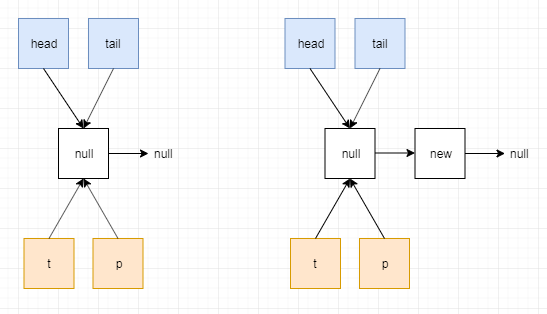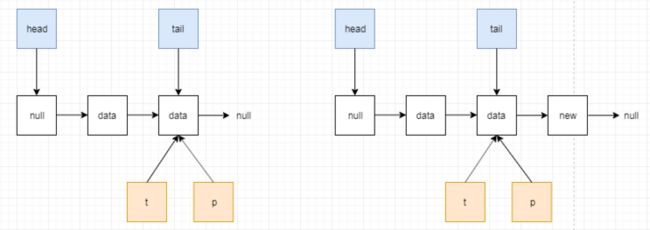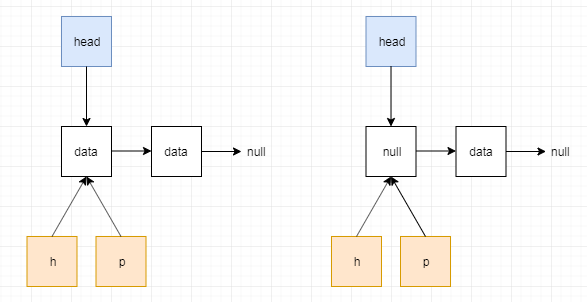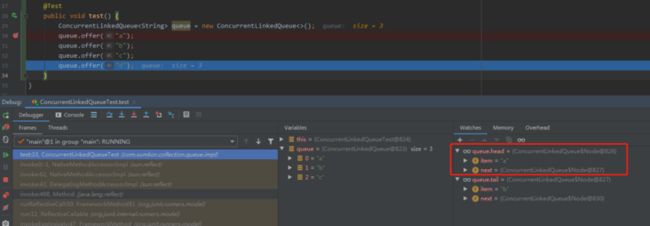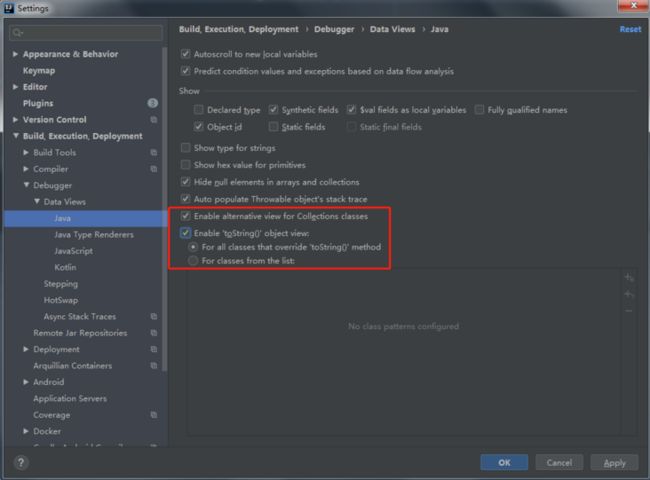ConcurrentLinkedQueue 是一个由链表结构组成的无界非阻塞队列,是 JDK 中唯一一个并发安全的非阻塞队列。使用无锁算法来保证线程安全,为了减少 CAS 操作造成的资源争夺损耗,其链表结构被设计为“松弛”的,本文对 ConcurrentLinkedQueue 的入队和出队过程进行图解,直观展示其内部结构。
1. 继承体系
java.util.concurrent.ConcurrentLinkedQueue
public class ConcurrentLinkedQueue extends AbstractQueue
implements Queue, java.io.Serializable 2. 数据结构
ConcurrentLinkedQueue 的数据结构为链表。
2.1 链表节点
需要注意的是,item 为空表示无效节点,非空表示有效节点。
无效节点是需要从链表中清理掉的节点,ConcurrentLinkedQueue 队列中为什么要存储无效节点呢,继续往下看。
java.util.concurrent.ConcurrentLinkedQueue.Node
private static class Node {
volatile E item; // 节点的数据
volatile Node next; // 下一个节点
/**
* Constructs a new node. Uses relaxed write because item can
* only be seen after publication via casNext.
*/
Node(E item) {
UNSAFE.putObject(this, itemOffset, item);
}
boolean casItem(E cmp, E val) {
return UNSAFE.compareAndSwapObject(this, itemOffset, cmp, val);
}
// 相比 putObjectVolatile(),putOrderedObject() 不保证内存可见性,但是性能较高
void lazySetNext(Node val) {
UNSAFE.putOrderedObject(this, nextOffset, val);
}
boolean casNext(Node cmp, Node val) {
return UNSAFE.compareAndSwapObject(this, nextOffset, cmp, val);
}
} 2.2 head 和 tail 节点
队列中定义了 head 和 tail 节点。
由于采用了非阻塞算法(non-blocking algorithms),head 和 tail 节点并不严格指向链表的头尾节点,也就是每次入队出队操作并不会及时更新 head 和 tail 节点。
通过规定“不变式”和“可变式”来维护非阻塞算法的正确性。
不变式:并发对象需要一直保持的特性。
不变式是并发对象的各个方法之间必须遵守的“契约”,每个方法在调用前和调用后都必须保持不变式。
采用不变式,就可以隔离的分析每个方法,而不用考虑它们之间所有可能的交互。
基本不变式
在执行方法之前和之后,队列必须要保持的不变式(The fundamental invariants):
- 当入队插入新节点之后,队列中有一个 next 域为 null 的节点(真正的尾节点)。
- 从 head 开始遍历队列,可以访问所有 item 域不为 null 的节点(有效节点)。
head 的不变式和可变式
/**
* A node from which the first live (non-deleted) node (if any)
* can be reached in O(1) time.
* Invariants:
* - all live nodes are reachable from head via succ()
* - head != null
* - (tmp = head).next != tmp || tmp != head
* Non-invariants:
* - head.item may or may not be null.
* - it is permitted for tail to lag behind head, that is, for tail
* to not be reachable from head!
*/
private transient volatile Node head; head 的不变式:
- 所有的有效节点,都能从 head 通过调用 succ() 方法遍历可达。
- head 不能为 null。
- head 节点的 next 域不能引用到自身。
head 的可变式:
- head 节点的 item 域可能为 null,也可能不为 null。
- 允许 tail 滞后(lag behind)于 head,也就是说:从 head 开始遍历队列,不一定能到达 tail。
tail 的不变式和可变式
/**
* A node from which the last node on list (that is, the unique
* node with node.next == null) can be reached in O(1) time.
* Invariants:
* - the last node is always reachable from tail via succ()
* - tail != null
* Non-invariants:
* - tail.item may or may not be null.
* - it is permitted for tail to lag behind head, that is, for tail
* to not be reachable from head!
* - tail.next may or may not be self-pointing to tail.
*/
private transient volatile Node tail; tail 的不变式:
- 通过 tail 调用 succ() 方法,最后节点总是可达的。
- tail 不能为 null。
tail 的可变式:
- tail 节点的 item 域可能为 null,也可能不为 null。
- 允许 tail 滞后于 head,也就是说:从 head 开始遍历队列,不一定能到达 tail。
- tail 节点的 next 域可以引用到自身。
3. 构造函数
默认创建空节点,head 和 tail 都指向该节点。
/**
* Creates a {@code ConcurrentLinkedQueue} that is initially empty.
*/
public ConcurrentLinkedQueue() {
head = tail = new Node(null);
}
/**
* Creates a {@code ConcurrentLinkedQueue}
* initially containing the elements of the given collection,
* added in traversal order of the collection's iterator.
*
* @param c the collection of elements to initially contain
* @throws NullPointerException if the specified collection or any
* of its elements are null
*/
public ConcurrentLinkedQueue(Collection c) {
Node h = null, t = null;
for (E e : c) {
checkNotNull(e);
Node newNode = new Node(e);
if (h == null)
h = t = newNode;
else {
t.lazySetNext(newNode);
t = newNode;
}
}
if (h == null)
h = t = new Node(null);
head = h;
tail = t;
} 4. 入队
4.1 源码分析
因为是无界队列,add(e)方法不用抛出异常。不支持添加 null。
java.util.concurrent.ConcurrentLinkedQueue#add
/**
* Inserts the specified element at the tail of this queue.
* As the queue is unbounded, this method will never throw
* {@link IllegalStateException} or return {@code false}.
*
* @return {@code true} (as specified by {@link Collection#add})
* @throws NullPointerException if the specified element is null
*/
public boolean add(E e) {
return offer(e);
}入队的核心逻辑:
java.util.concurrent.ConcurrentLinkedQueue#offer
/**
* Inserts the specified element at the tail of this queue.
* As the queue is unbounded, this method will never return {@code false}.
*
* @return {@code true} (as specified by {@link Queue#offer})
* @throws NullPointerException if the specified element is null
*/
public boolean offer(E e) {
checkNotNull(e);
final Node newNode = new Node(e);
// 注意tail不一定是尾节点(甚至tail有可能存在于废弃的链上,后有解释),但是也不妨从tail节点开始遍历链表
for (Node t = tail, p = t;;) { // 初始时t和p都指向tail节点
Node q = p.next;
if (q == null) { // 使用p.next是否为空来判断p是否是尾节点,比较准确
// p is last node // 进入这里说明此时p是尾节点
if (p.casNext(null, newNode)) { // 若节点p的下一个节点为null,则设置为newNode
// Successful CAS is the linearization point
// for e to become an element of this queue,
// and for newNode to become "live".
if (p != t) // hop two nodes at a time
// 不管p与t是否相同,都应该casTail。但是这里只在p与t不同时才casTail,导致tail节点不总是尾节点,目的是减少对tail的CAS
casTail(t, newNode); // Failure is OK. // 将尾节点tail由t改为newNode,更新失败了也没关系,因为tail是不是尾节点不重要:)
return true;
}
// Lost CAS race to another thread; re-read next // CAS失败,说明其他线程先一步操作使得p的下一个节点不为null,需重新获取尾节点
}
else if (p == q) // 如果p的next等于p,说明p已经出队了,需要重新设置p、t的值
// We have fallen off list. If tail is unchanged, it
// will also be off-list, in which case we need to
// jump to head, from which all live nodes are always
// reachable. Else the new tail is a better bet.
// 1. 若节点t不再是tail,说明其他线程加入过元素(修改过tail),则取最新tail作为t和p,从新的tail节点继续遍历链表
// 2. 若节点t依旧是tail,说明从tail节点开始遍历链表已经不管用了,则把head作为p,从head节点从头遍历链表(注意这一步造成后续遍历中p!=t成立)
p = (t != (t = tail)) ? t : head;
// 这里没有更新tail,仍留在废链上
else
// Check for tail updates after two hops.
// 进入这里,说明p.next不为null,且p未出队,需要判断:
// 1. 若p与t相等,则t留在原位,p=p.next一直往下遍历(注意这一步造成后续遍历中p!=t成立)。
// 2. 若p与t不等,需进一步判断t与tail是否相等。若t不为tail,则取最新tail作为t和p;若t为tail,则p=p.next一直往下遍历。
// 就是说从tail节点往后遍历链表的过程,需时刻关注tail是否发生变化
p = (p != t && t != (t = tail)) ? t : q;
}
} 更新 tail 节点:
java.util.concurrent.ConcurrentLinkedQueue#casTail
private boolean casTail(Node cmp, Node val) {
return UNSAFE.compareAndSwapObject(this, tailOffset, cmp, val);
} 入队的基本思想:
- 从 tail 节点开始遍历到尾节点,若定位到尾节点(p.next == null),则入队。
- 遍历过程中,如果遍历到无效节点(p.next == p),需要重新从有效节点(tail 或 head)开始遍历。
- 遍历过程中,时刻关注 tail 节点是否无效。若无效了需要重新从最新的 tail 开始遍历,否则继续遍历当前的下一个节点。
需要注意的点:
- 入队过程中没有频繁执行 casTail(出队过程不会执行 casTail),因此 tail 位置有滞后,不一定指向尾节点,甚至可能位于废弃的链上。
- 使用 p.next == null 来判断尾节点,比使用 tail 准确。
- 通过 tail 遍历节点可能会遍历到无效节点,但是从 head 遍历总能访问到有效节点。
4.2 入队过程图示
执行offer(e)入队,tail 并不总是指向尾节点,多个元素入队过程如下:
添加第一个元素(t 与 p 相等,不会更新 tail):
添加第二个元素(t 与 p 不相等,更新 tail):
添加第三个元素(t 与 p 相等,不会更新 tail):
4.3 tail 位于废弃链
由于出队 poll() 逻辑并不会执行 casTail() 来维护 tail 所在位置,因此 tail 可能滞后于 head,甚至位于废弃链上,如下图所示:
此时从 tail 往后遍历会访问到无效节点 p,该节点满足 p == p.next。
如果想要继续访问到有效节点,需分两种情况:
- 从遍历开始至今,tail 的位置无变化,此时需要从 head 节点开始往下才能遍历到有效节点。
- 从遍历开始至今,tail 的位置发生了变化,说明其他线程更新了 tail 的位置,此时从新的 tail 开始往下遍历即可。
5. 出队
java.util.concurrent.ConcurrentLinkedQueue#poll
public E poll() {
restartFromHead:
for (;;) {
for (Node h = head, p = h, q;;) { // 初始时h和p都指向head节点,从head节点开始遍历链表
E item = p.item;
if (item != null && p.casItem(item, null)) { // p.item不为空,把p节点的数据域设为空,返回p节点的数据
// Successful CAS is the linearization point
// for item to be removed from this queue.
if (p != h) // hop two nodes at a time
// 若p.next不为空,则把p.next设为头节点,把h和p出队;若p.next为空,则把p设为头节点,把h出队
updateHead(h, ((q = p.next) != null) ? q : p);
return item;
}
else if ((q = p.next) == null) { // 进入这里,说明p.item必然为空。若p.next也为空,说明队列中没有数据了,需要返回null
updateHead(h, p); // 把头节点设为p,把h出队
return null;
}
else if (p == q) // 如果p的next等于p,说明p已经出队了,重新从头节点开始遍历
continue restartFromHead;
else
p = q; // p = p.next 继续遍历链表
}
}
} 更新 head 节点:
java.util.concurrent.ConcurrentLinkedQueue#updateHead
/**
* Tries to CAS head to p. If successful, repoint old head to itself
* as sentinel for succ(), below.
*/
final void updateHead(Node h, Node p) {
if (h != p && casHead(h, p)) // 节点h和p不等,且当前头节点为h,则把头节点设为p
h.lazySetNext(h); // 原头节点h的next指向自身,表示h出队
} 出队的基本思想:
- 从 head 节点开始遍历找出首个有效节点(p.item != null),返回该节点的数据(p.item)。
- 遍历过程中,如果遍历到尾节点(p.next == null),则返回空。
- 遍历过程中,如果遍历到无效节点(p.next == p),说明其他线程修改了 head,需要重新从有效节点(新的 head)开始遍历。
需要注意的是,并不是每次出队时都执行 updateHead() 更新 head 节点:
- 当 head 节点里有元素时,直接弹出 head 节点里的元素,而不会更新 head 节点。
- 只有当 head 节点里没有元素时,出队操作才会更新 head 节点。
采用这种方式同样是为了减少使用 CAS 更新 head 节点的消耗,从而提高出队效率。
5.1 出队过程图示
场景一:队列中具有两个节点,头节点为无效节点。由于 p != h,此时需要把头节点出队。
场景二:队列中具有两个节点,头节点为有效节点。由于 p == h,此时不需要把头节点出队。
6. 容量
不用定义初始容量,无须扩容,容量最大值为 Integer.MAX_VALUE。
获取队列的容量:从头开始遍历队列中的有效节点,并计数。注意是遍历过程是弱一致的。
java.util.concurrent.ConcurrentLinkedQueue#size
public int size() {
int count = 0;
for (Node p = first(); p != null; p = succ(p)) // 从第一个有数据的节点开始,一直遍历链表
if (p.item != null)
// Collection.size() spec says to max out
if (++count == Integer.MAX_VALUE) // 自增直到最大值
break;
return count;
} java.util.concurrent.ConcurrentLinkedQueue#succ
/**
* Returns the successor of p, or the head node if p.next has been
* linked to self, which will only be true if traversing with a
* stale pointer that is now off the list.
*/
final Node succ(Node p) {
Node next = p.next;
return (p == next) ? head : next; // 如果p已经出队了,则重新从头节点开始,否则继续遍历下一个节点
} 7. IDEA 调试的问题
编写单元测试,对 ConcurrentLinkedQueue#offer 进行调试。
@Test
public void test() {
ConcurrentLinkedQueue queue = new ConcurrentLinkedQueue<>();
queue.offer("a");
queue.offer("b");
queue.offer("c");
queue.offer("d");
} 阅读源码可知入队过程并不会修改 head 节点,但是从 IDEA 的 debug 结果看到 head 节点发生了变化!
这是因为 IDEA 的 debug 过程会调用 ConcurrentLinkedQueue#toString 导致的,关闭即可。
ConcurrentLinkedQueue#toString 方法会创建迭代器,会调用到 ConcurrentLinkedQueue#first 方法,该方法会将首个有效节点作为头节点。
java.util.concurrent.ConcurrentLinkedQueue.Itr#Itr
java.util.concurrent.ConcurrentLinkedQueue.Itr#advance
java.util.concurrent.ConcurrentLinkedQueue#first
Node first() { // 获取第一个具有非空元素的节点
restartFromHead:
for (;;) {
for (Node h = head, p = h, q;;) {
boolean hasItem = (p.item != null);
if (hasItem || (q = p.next) == null) {
updateHead(h, p);
return hasItem ? p : null;
}
else if (p == q)
continue restartFromHead;
else
p = q;
}
}
} 重新打断点调试,可以看到入队后 head 节点不变。
8. 总结
- ConcurrentLinkedQueue 是非阻塞队列,采用 CAS 和自旋保证并发安全。
- ConcurrentLinkedQueue 的 tail 并不是严格指向尾节点,通过减少出队时对 tail 的 CAS 以提高效率。
- ConcurrentLinkedQueue 的 head 所指节点可能是空节点,也可能是数据节点,通过减少出队时对 head 的 CAS 以提高效率。
- 采用非阻塞算法,允许队列处于不一致状态(head/tail),通过保证不变式和可变式,来维护非阻塞算法的正确性。
- 由于是非阻塞队列,无法使用在线程池中。

